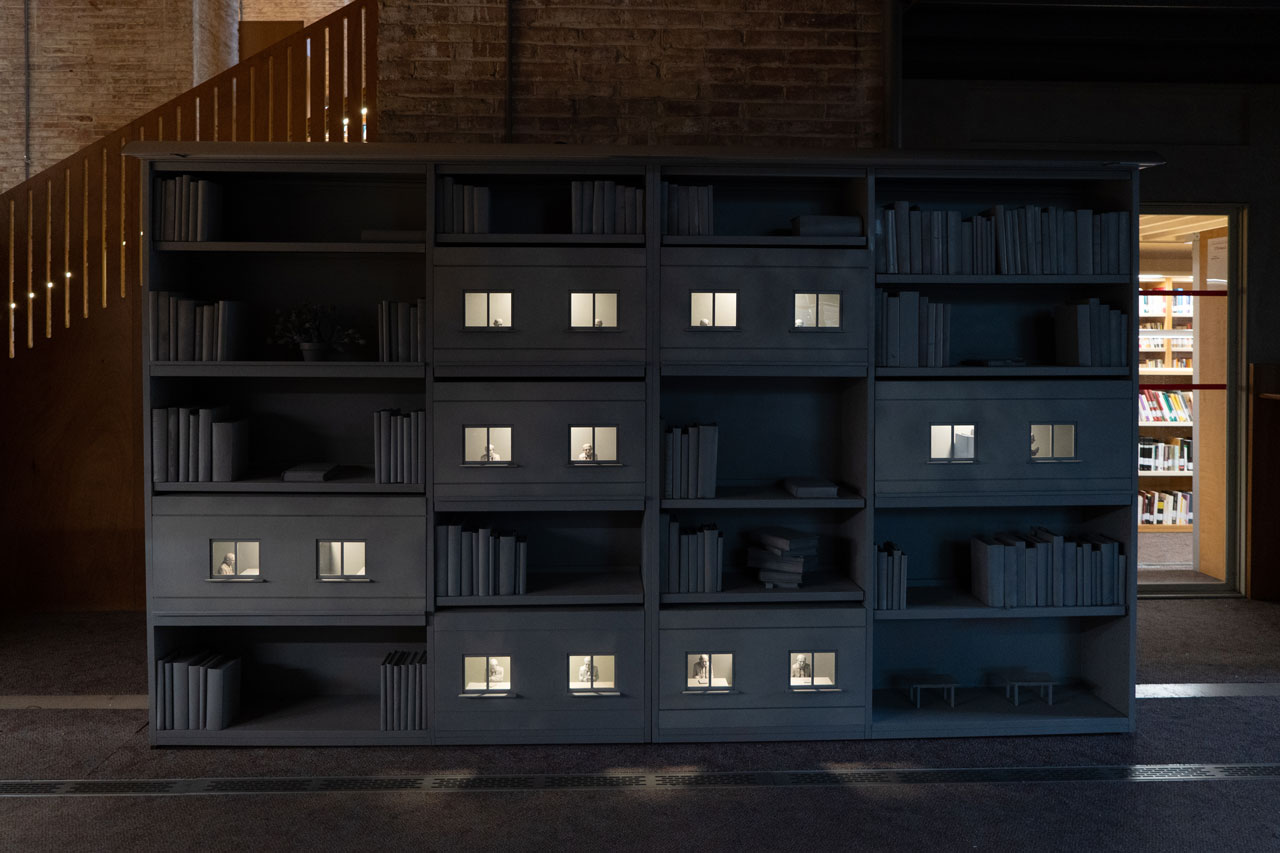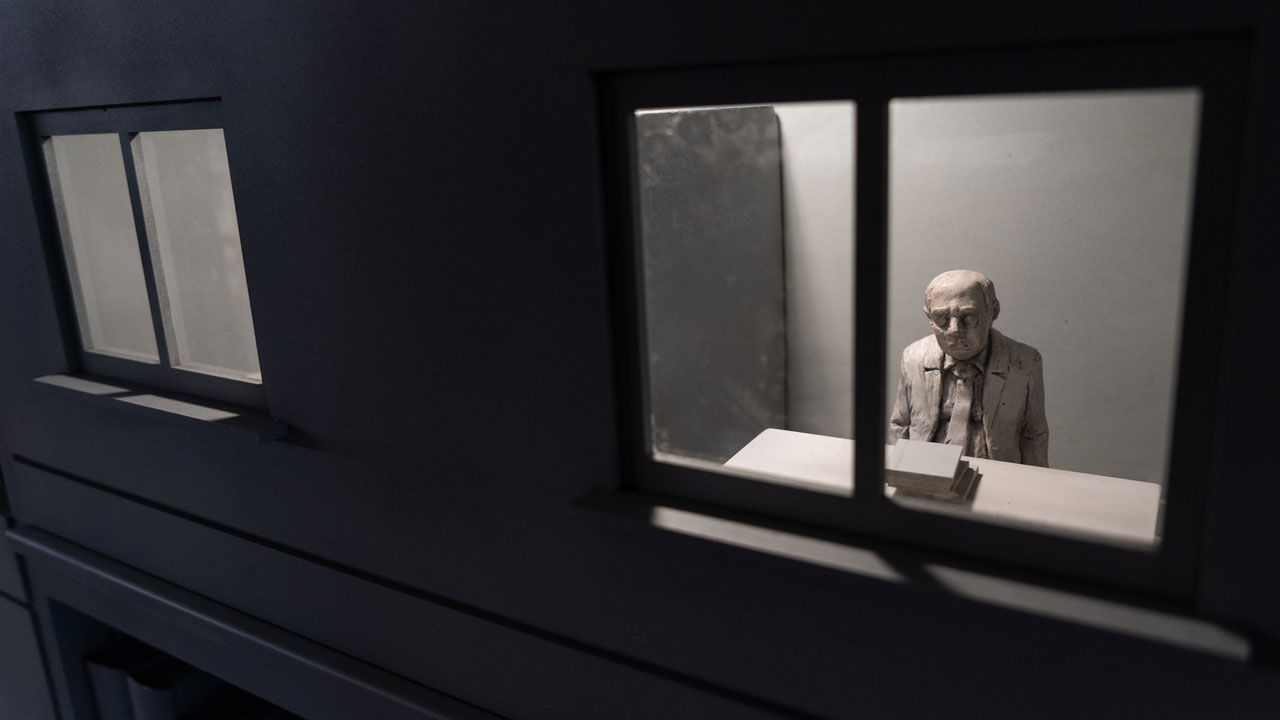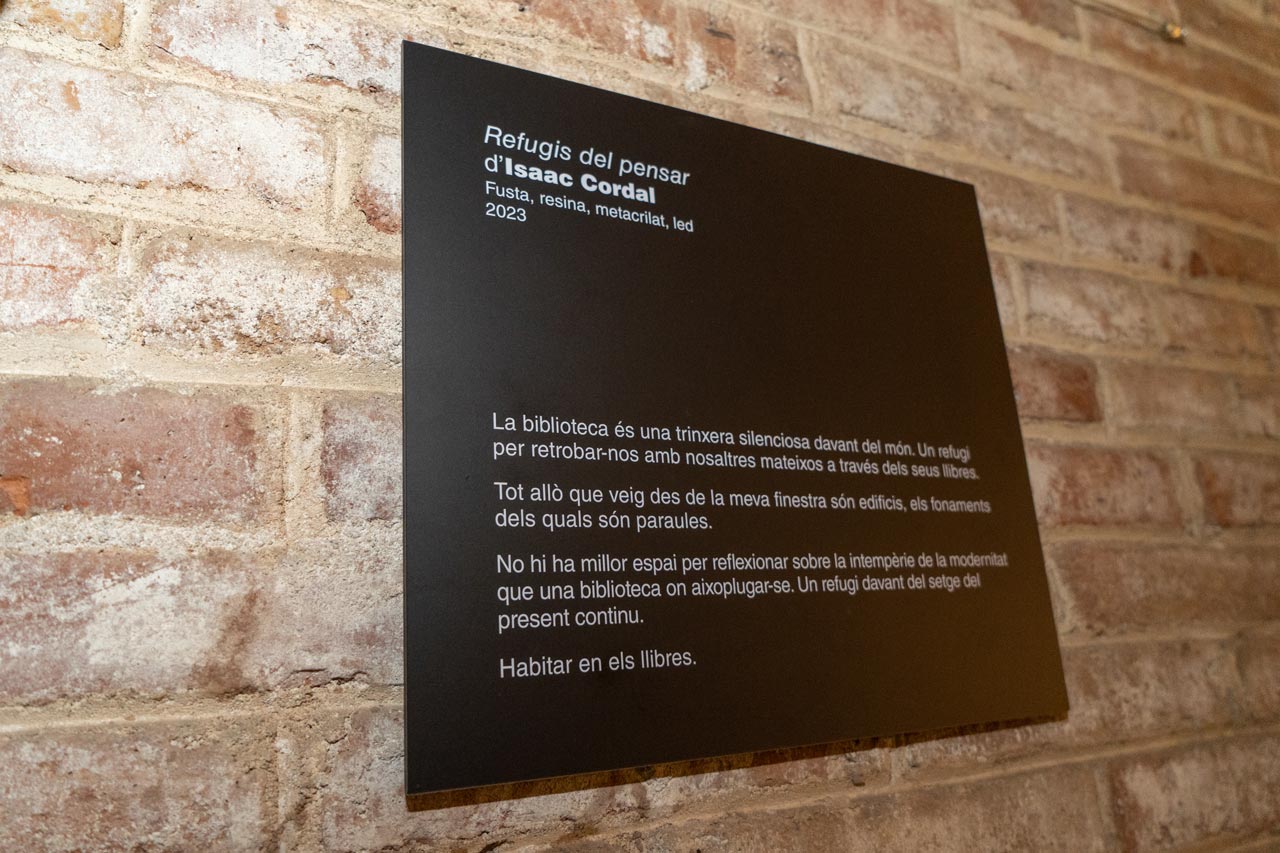tres60
11. tres60
‘Thinking refuges’, an installation by Isaac Cordal that encourages reflection on progress
The work, located at the entrance to the Dipòsit de les Aigües on the Ciutadella campus and part of the UPF Art Track, transforms a set of bookshelves into a building in which each shelf becomes a ‘thinking cabin’, housing a total of 15 small human figures.
On 28 April 2023, the inauguration of the work Thinking refuges by the Galician artist Isaac Cordal was held in the Jardí de les Aigües on the Ciutadella campus. Cordal created the work expressly for installation in one of the passageways at the entrance to UPF’s Dipòsit de les Aigües library, where it has been integrated into the rest of the space’s shelving.

The work, which is now part of the university’s collection and has been added to the UPF Art Track, is intended to signify a place of isolation and refuge for reflection, an invitation to introspection. Its inauguration consolidates an area that is part of the university’s DNA: the construction of a permanent art collection on campus.
Isaac Cordal: ‘The installation aims to be a critical reflection on the idea of progress, a work of art done in grey to reflect on the ongoing present’
Isaac Cordal defines the installation, which he began designing nearly four years ago, as a ‘critical reflection on the idea of progress, a work of art done in grey to reflect on the ongoing present, on our current state’. According to the artist, ‘It is intended to symbolize blank pages of books, where ideas accumulate... It is like a close-up of the state of the world, which is actually more complex than the work itself’.
A shelf transformed into a work of art
Thinking refuges is an installation made with wood, resin, methacrylate and LED lights, through which Cordal acts on the UPF Library’s furniture, transforming a bookshelf into a building in which ‘each shelf becomes a room, a refuge, a thinking cabin, a place to be alone, to reflect on humanity, a bunker providing shelter from the world’s assaults’. Various windows reveal small characters in different poses inside each room.
The installation consists of a total of seven cubicles, each with two windows (fourteen in all), offering glimpses of fifteen human figures (two per cubicle, except for one, which has three).

The cubicles are accompanied by several (real) books painted grey, which cannot be removed, as they are part of the structure itself. Each dwelling has its own light and, in this regard, according to the artist, ‘the half light of the library becomes an added value, lending the piece more autonomy in the space’.
The plaque accompanying Cordal’s work bears the following inscription:
‘The library is a silent trench before the world, a refuge for finding ourselves again through books. Everything I see from my window is buildings, the foundations for which are words. There is no better space to reflect on the inclemency of modernity than a library in which to seek shelter, a refuge from the siege of the ongoing present. To dwell in books.’
A long-standing relationship with the university
According to Josep Maria Antó, emeritus professor of medicine at UPF and a researcher at ISGlobal, at a congress in 2017, he saw a picture of an installation by the artist in Nantes (France) that prompted the viewer to reflect on climate change. He became interested in his work, which he considers ‘a source of constant questioning and interpretation of the existential challenges facing humankind’.
Later that year, with the start of the Planetary Wellbeing project at UPF, promoted by then rector Jaume Casals and coordinated by Antó together with Josep Lluís Martí, the university began its relationship with the artist, which eventually resulted in Thinking refuges. ‘This work transforms the landscape of the Dipòsit de les Aigües, which will remain open to multiple readings’, said Antó.

Casals recalls how, as a result of Antó’s connection with Cordal, he asked Culture UPF to contact the artist about ‘doing something together’, an idea that has now become a reality. ‘Cordal’s works contain thoughts, feelings, something ineffable, difficult to explain. He uses his figures to create a certain environment, a landscape.’
